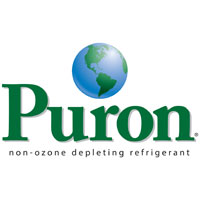Indoor air quality has a major influence on overall health, so it’s important to find ways to keep your air quality high or improve poor air quality in your home. Studies have found that ultraviolet lights are one way to reduce the impact of indoor air contaminants.
The sterilizing ability of UV light is well-known. Hospitals sometimes use UV light to keep their environments microbe-free, and UV light can also be used to treat water. Germicidal UV lamps are sometimes found in food processing plants to help protect food from contamination.
UV Lights Render Microbes Harmless
In homes, UV germicidal irradiation systems can target upper-room air, HVAC ductwork or cooling coils and drain pans. The moisture found on HVAC coils and drain pans can attract microbes such as mold, bacteria or fungi, which love warm, damp environments. Mold can also grow in ducts over time, particularly areas subject to moisture from evaporation.
Upper-room air UV systems have the advantage of targeting air once it has already reached your living spaces. These systems direct their UV light into the upper parts of a room, decontaminating the air as it circulates without exposing occupants to direct UV light exposure.
UV light improves air quality by targeting the genetic material of microbes that can inhabit indoor air. The light breaks down the DNA and RNA in these microbes, causing them to break apart entirely or simply become harmless. Airborne pathogens that are vulnerable to UV light include bacteria, viruses, mildew, mold, fungi and spores.
Other Ways to Improve Indoor Air Quality
UV lights can be a great tool to improve indoor air quality, but they shouldn’t be the only tool you use. Proper ventilation, cleaning, maintenance and moisture control should also be part of your efforts to ensure that your indoor air is as healthy as possible.
According to the EPA, indoor air is often more polluted than outdoor air. As a result, opening windows and doors whenever possible can help to ventilate your home and refresh your indoor air. High quality air filters and frequent filter changes can also make a big difference to air quality.
Clean surfaces in your home are critical for air quality control. Sweeping and mopping floors, vacuuming carpets and washing bedding are all important steps to take regularly. Use door mats, or remove shoes at the door to avoid tracking in dirt and other contaminants from outdoors.
Thank you for visiting our blog! Please contact us if you would like to speak with an expert about indoor air quality management.













